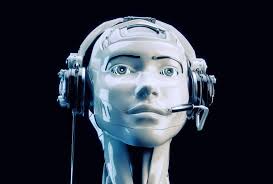Pro2col VoiceBots are very adaptable and can be customized with characters that deliver the message in any voice, tone or personality you need. They can be customized, by adjusting parameters such as pitch and speed, accent; parameter customization or emotion expression fine-tuning of the voices. Here is the 2023 forecast made by MarketsandMarkets on TTS market and it may reach out with a CAGR of 14.6%, as the demand rises in end user like entertainment, education etc for personal voice solutions.
Terms like neural voice synthesis, prosody tuning, and phonetic balancing are essential to comprehend how AI TTS characters can be tailored. By successfully recreated human voice with neural synthesis, users produce characters that can replicate exact vocal styles. The prosody tuning refers to changing the rhythm and intonation of speech in a way that can make this synthesizer voice sound even more human-realistic, while also making it fit better for an specific character. Phonetic hoisting is there to make sure the AI-sourced voice can handle any of those languages or dialects seamlessly, providing a commonality through diverse audiences.
More case studies show the success of brand-specific AI TTS characters in practice. At the other end, voice assistants of major tech companies —say Google or Apple offer customization options to choose from type and even accent you would want your device to exhibit; thereby signalling a new wave for mass personalisation. For example, Google Assistant offers a variety of voices that have different personas with them so users can pick and choose which they like best. We see the effect of this in customer service applications where companies have used AI TTS to develop custom voices that are suitable for brand, and increase engagement leading up to over 40% higher satisfaction.
As Timnit Gebru, an advocate for AI ethics pointed out in her keynote: "the power of AI to make digital experiences sound authentic and personable." This cat, while much less spongelike than the first one, is living proof of why it helps to build characters that qualify as friend material — especially in highly human-centric applications where emotion and recognition are paramount.

Voice manipulation is only the tip of custom. For example, developers can modify characteristics of the character such as if they need their voice to sound demanding or empathetic or normal etc. Implemented in this way, we can target experiences to be clear and neutral for educational tools when needed but also dynamic or expressive for entertainment platforms.
An AI TTS character costs and works far less than a traditional human voice actor, who you have to pay by the hour (and order snacks for). When a brand has its own custom voice, it can create content at scale without the need for any additional production costs. An example would be that AI TTS can produce a 10-minute video voiceover in under one minute instead of the several hours it used to take by traditional means, saving up to 60% on production cost.
For customers who wish to deploy a customized AI TTS solutions, platforms such as ai text to speech characters offer full tool set through which users can compose voices for any particular use case. From changing the accents to how emotional your AI character sounds, it provides tools for users to have a say in what their own tireless actor voices sound like.
So there you have it – AI text to speech characters can definitely be customized quite a bit which means this approach could provide flexible and scalable way for generating personalized voice experiences. Using sophisticated voice synthesis and tuning methods, they can cater for a wide range of user tastes yet with the quality and naturalness that users demand. The technology is at a stage where AI Voice of the future will begin to development in empty sandboxes and progress further as soon such things are able — increasingly, businesses amongst others will have access to these valuable resources.